Aquatic Weed Control Projects
Ongoing Projects

Eradication: Class A Noxious Weeds
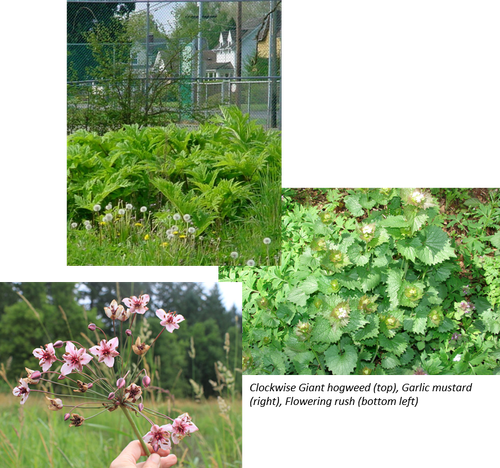
Class A noxious weeds are Lewis County Noxious Weed Control's highest priority for early detection and rapid eradication. Generally, these noxious weeds are either entirely absent in Washington State or are only present in a very limited distribution. As such, and as required by law, the management goal for these weed species is total eradication in all plant parts. Garlic mustard, Giant hogweed, False brome and Milk thistle are all examples of Class A noxious weeds that have become more common in the state in recent years and could conceivably arrive in Lewis County from neighboring areas. Our program staff are always on the lookout for new populations, and we appreciate tips on any of these species from concerned residents.
The only class A noxious weed that is currently known within the confines of Lewis County is a single infestation of Milk Thistle, in a common dumping area of Centralia, WA. The infestation was found in mid-summer 2022 and is being addressed by the noxious weed office accordingly. We will continue to check the status of this infestation regularly and take action to prevent its reestablishment.
Historically, there have been records of Giant Hogweed in Lewis County, but to the best of our knowledge they have been eradicated. Reports of Giant hogweed in Lewis County are received and investigated each year, but most turn out to be the native Cow parsnip, a common lookalike. False brome, eggleaf spurge, and Turkish & Slenderflower thistles have not been known to occur in the county as of the date of this writing, but are known to exist in Cowlitz County, just to the south. We monitor likely encroachment areas multiple times a year. Other Class A noxious weeds that Lewis County citizens should be aware of include: Garlic mustard, Flowering rush, and Hydrilla. The latter two are both aquatic weeds which are problematic for our water bodies. Aquatic weeds are easily spread through boating and other water recreational activities, especially when owners do not clean, drain and dry their watercrafts between using them in different waterbodies.
Any known infestation of the above plants within Lewis County will become the program's highest priority upon discovery. If you think you have found an infestation of a Class A noxious weed within the confines of Lewis County, please notify program staff immediately.
Education, Control and Enforcement: Class B Designates and Selects
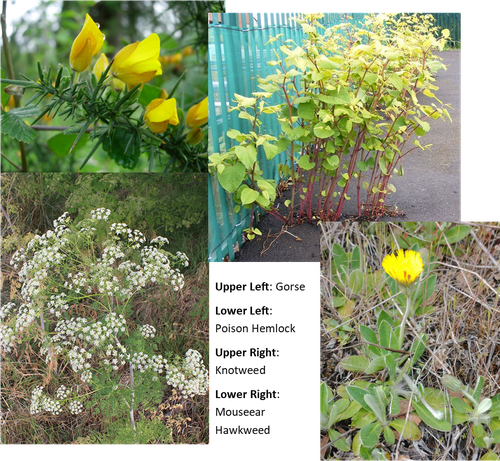
Class B-Designate noxious weeds are received by the county Weed Board as orders from the state Weed Board, and are required for control in all parts of the county. The level of control required for these weeds is the cessation of all seed or other propagule production. Examples include Dalmatian toadflax, Himalayan knotweed, Hoary alyssum, Meadow knapweed, Mouseear hawkweed, Policeman's helmet, Purple loosestrife, Shiny geranium, Spotted knapweed, and Spurge laurel. These weed species are generally common in some parts of the state, but not in Lewis County itself, and may be entirely absent from other counties, including neighboring ones.
Class B-Select noxious weeds are those that the county weed board decides are local priorities for control and/or education. The reasoning for selection often centers around protection of the agriculture, other industry, or ecology of the area, and while some of these weeds are required for control in all circumstances, the requirement for control may differ for each species, and depend on the proximity to certain areas, such as timberland, wilderness or agriculture, areas clear of infestation, neighboring landowner complaints, rights-of-way, etc. Examples of Class B-Select noxious weeds in Lewis County include Bohemian knotweed, Butterfly bush, Eurasian watermilfoil, Giant and Japanese knotweeds, Parrotfeather, Poison hemlock, Scotch broom and Tansy ragwort.
As stated in the RCW 17.10, it is the landowner's responsibility to control Noxious Weeds on their property, but we are here to help with identification, advice and site specific recommendations. In addition, Lewis County Noxious Weed Control staff regularly surveys for these weed species and engages landowners to inform them of their legal requirement to control certain noxious weed species, when relevant.
Invasive Knotweed Control

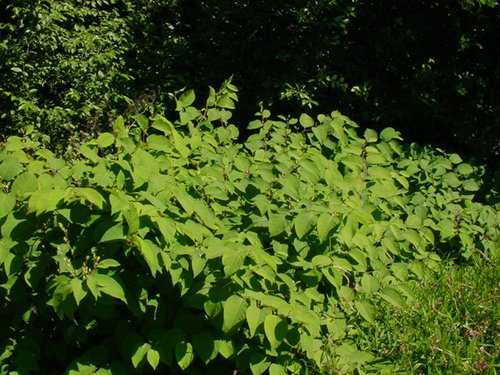
The Lewis County Noxious Weed Control Board is continuing a project aimed at controlling a highly destructive and invasive plant, known as Knotweed, along high-priority waterways in our beautiful county.
Knotweed is group of three perennial species, and one hybrid, with spreading rhizomes and numerous reddish-brown, freely branched stems. Plants can reach 4 to 8 feet in height and is often shrubby. The consequences of this plant are significant. Knotweed degrades riparian corridors, negatively impacts salmon habitat, greatly reduces native plant biodiversity, limits recreational access, and exacerbates soil erosion.
This project works with landowners to survey, identify, and control knotweed on properties adjacent to river systems and other lands that serve as sources of spread. Funding for the project has historically come from the Washington State Department of Agriculture & Dept. of Natural Resources. Lewis County Noxious Weed Control Board hopes to secure future sources of funding to increase project capacity.
Report knotweed infestations along Lewis County waterways to us via weeds@lewiscountywa.gov or by calling (360) 740-1215.
Purple Loosestrife Control
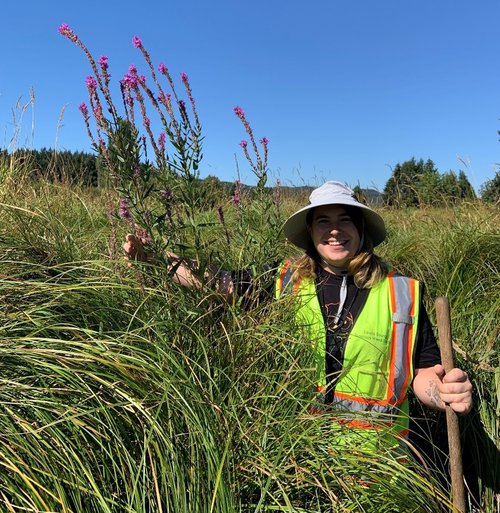
While Purple loosestrife might be beauteous, this beastly plant will rapidly colonize wetland sites and disrupt ecological systems if given the chance! Purple loosestrife’s showy flowers range from purple to magenta and generally form dense spikes that stand out amongst native vegetation along river banks. It can range in height from 3-7 feet tall and often has multiple, branched stems.
Lewis County Noxious Weed Control Board offers free-of-charge control for purple loosestrife given its limited distribution and significant ecological consequences. Please report any sightings of purple loosestrife via weeds@lewiscountywa.gov or by calling (360) 740-1215.
Forest Service Invasive Plant Management
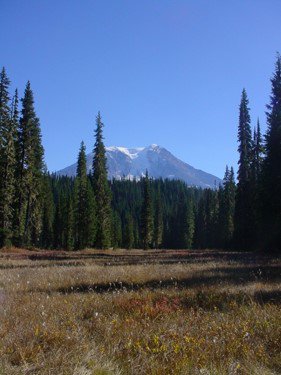
Interagency cooperative weed management with the US Forest Service in the Cowlitz Valley Ranger District, and Mt. St. Helens National Volcanic Monument, has been ongoing for years. As the primary land managing agency for about a third of Lewis County, this partnership is crucial to protecting both public and private interests in matters of local ecological concern.
Our crews help Forest Service staff perform surveys, treatments, site restoration and follow-up monitoring as important components of their vegetation and pest management programs. The major focus is controlling Scotch broom, Knapweeds and other noxious weeds on trailheads, campgrounds and roadsides from which weed seeds can travel throughout the forest, which helps ensure that the forest understory and other ecosystems remain intact for generations to come. Other partners in this effort include: Mt. Rainier National Park, Washington State Department of Transportation as well as the Noxious Weed Control Boards of Skamania, Cowlitz, Pierce and Yakima Counties.
